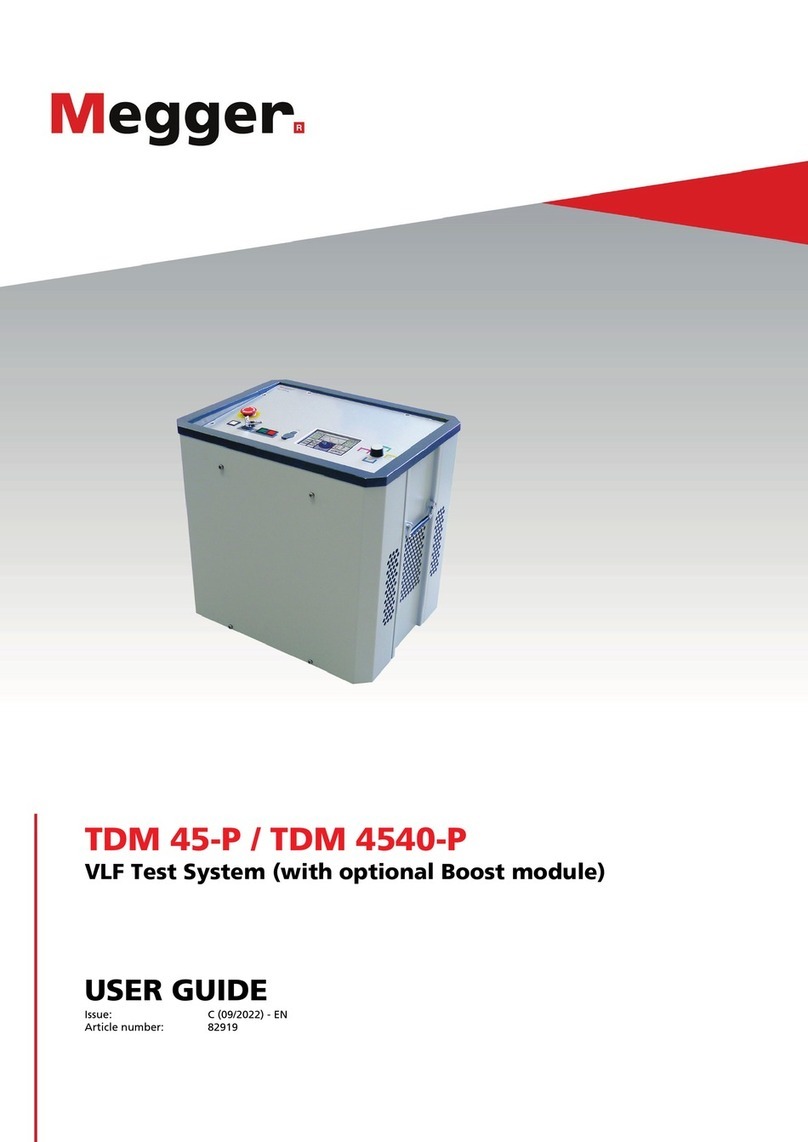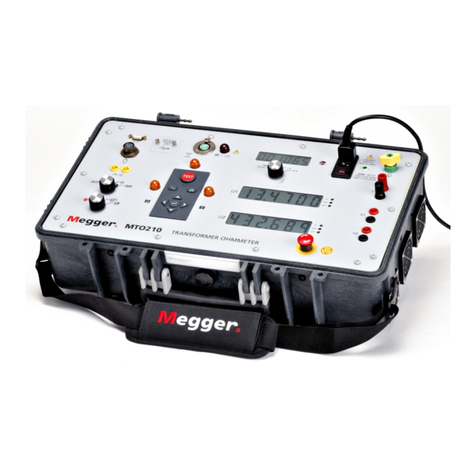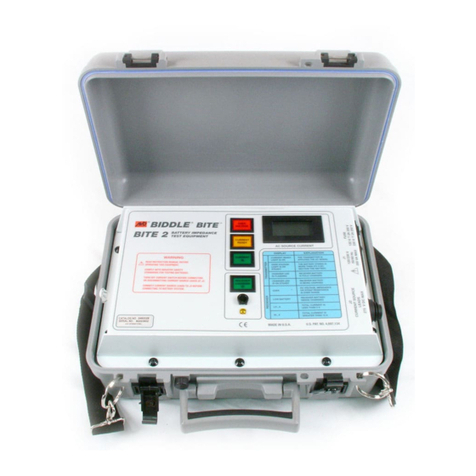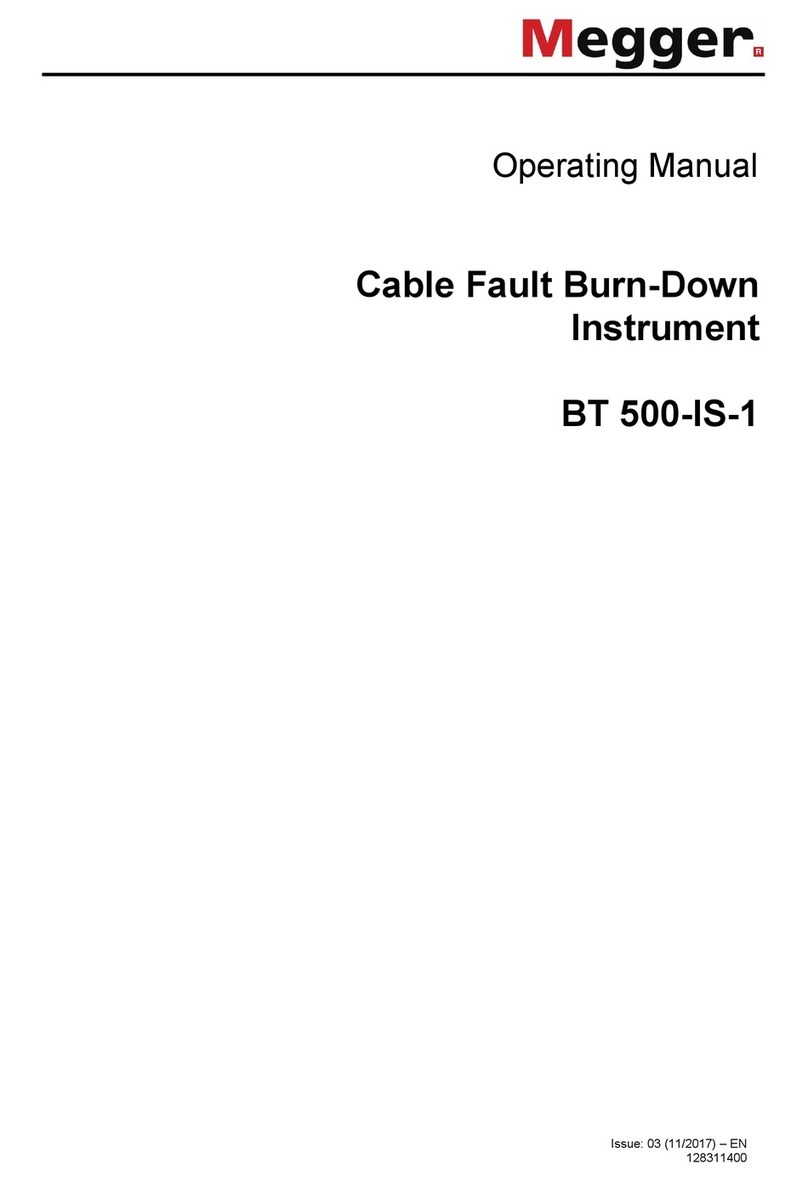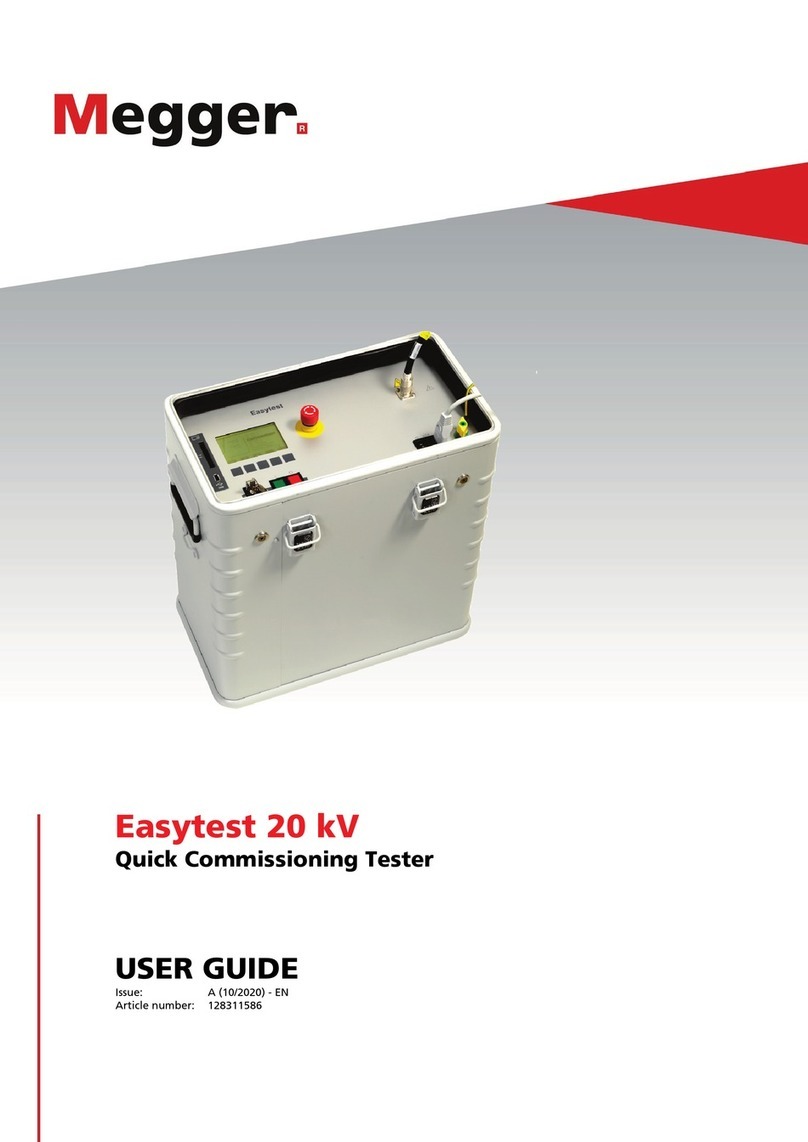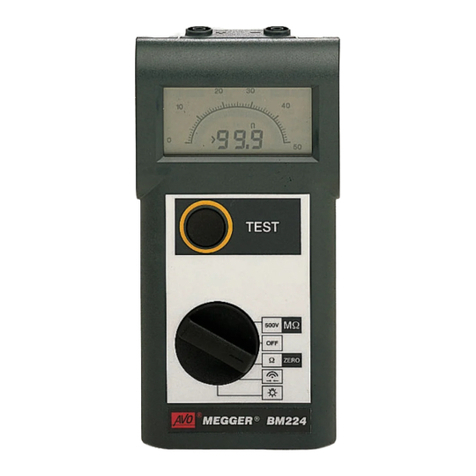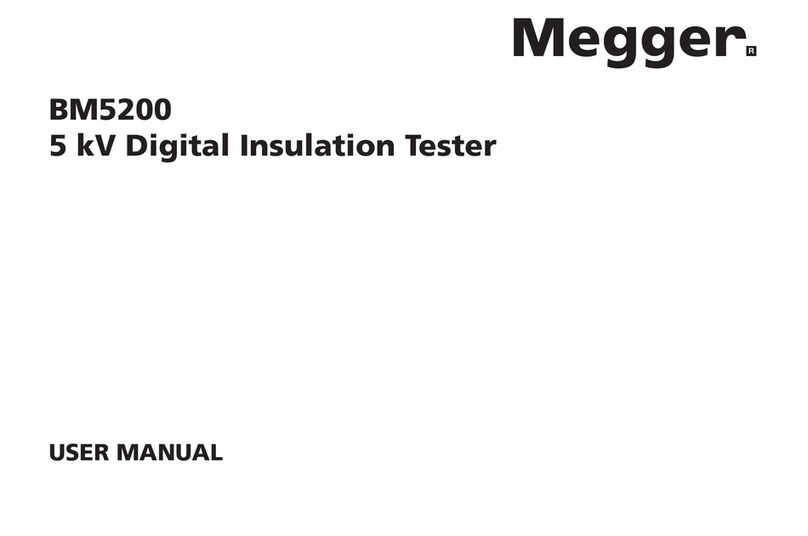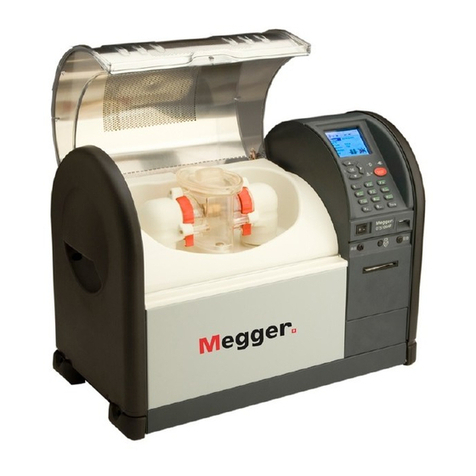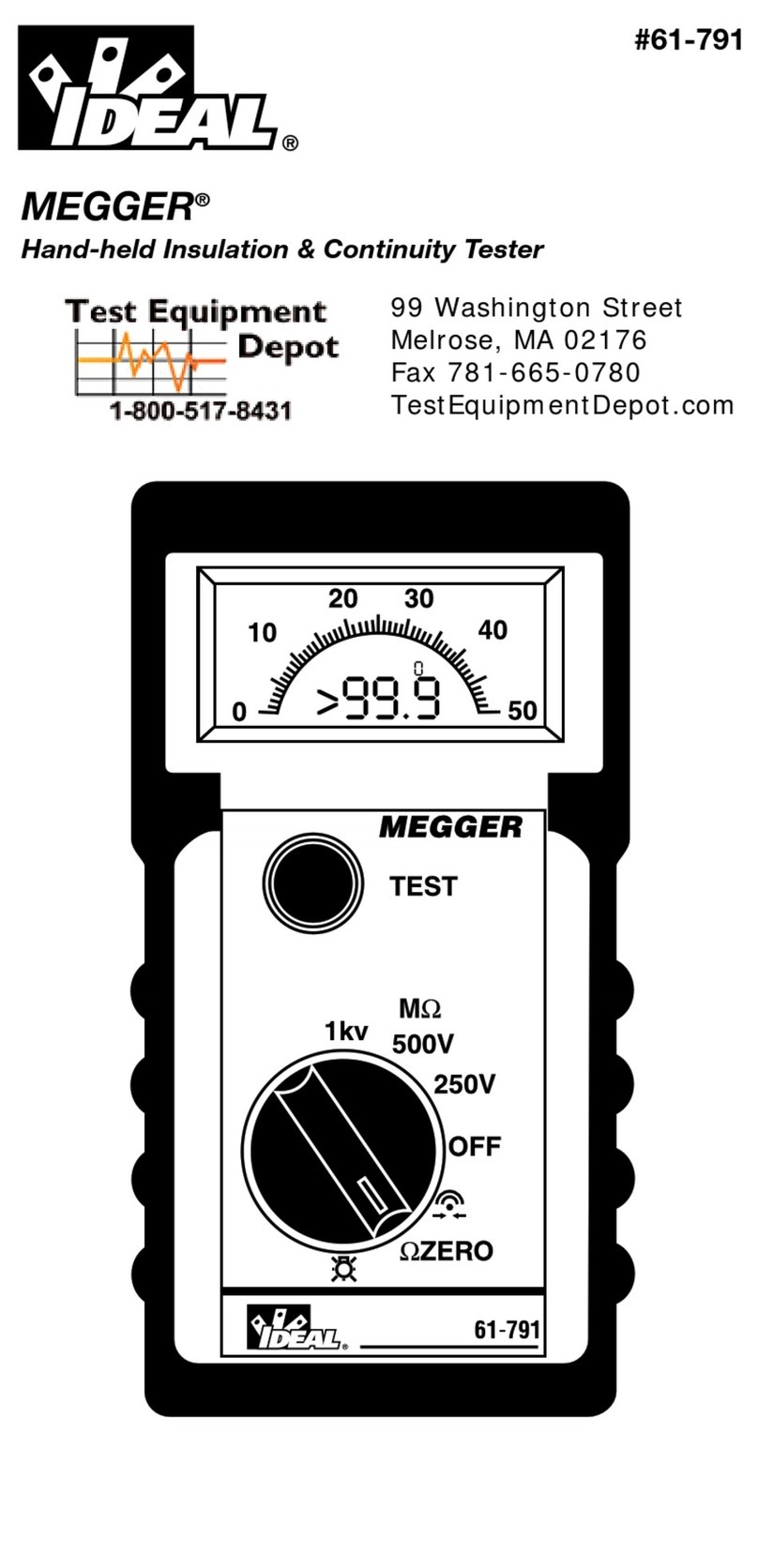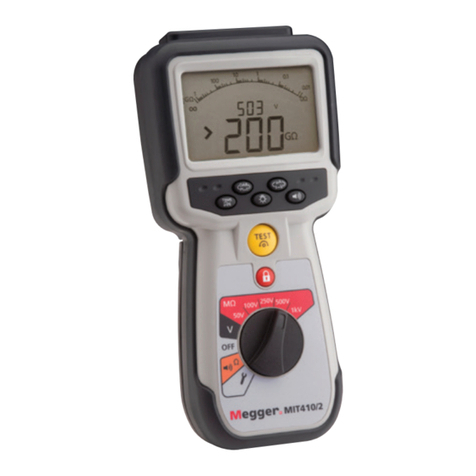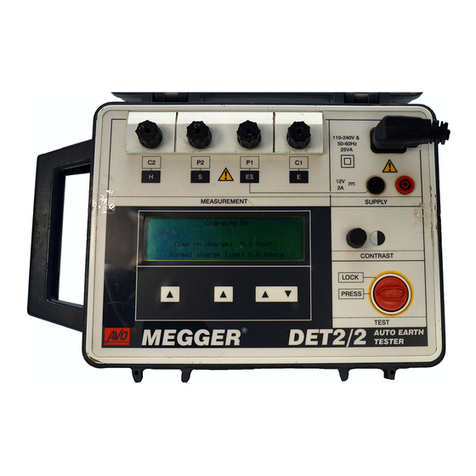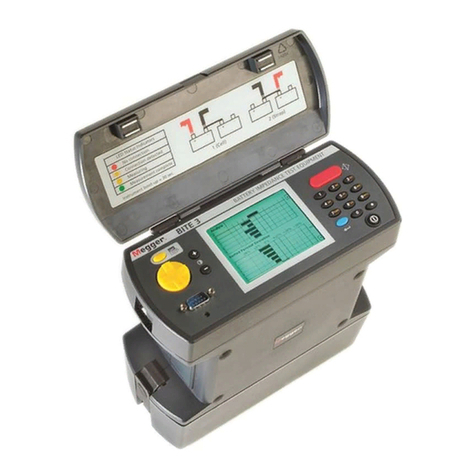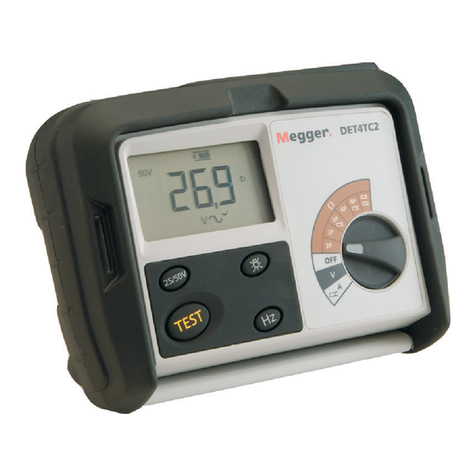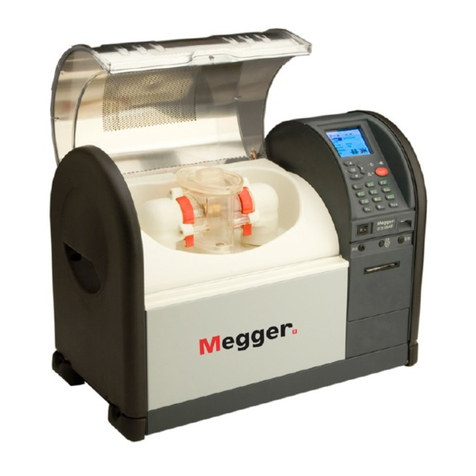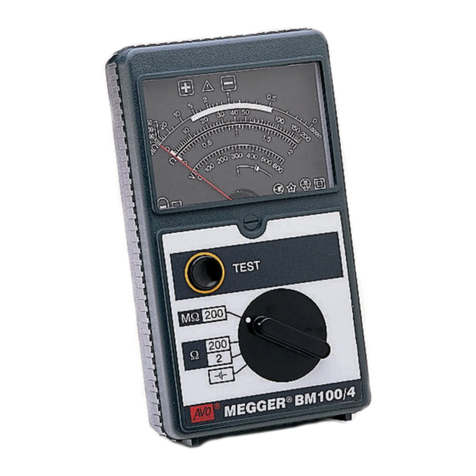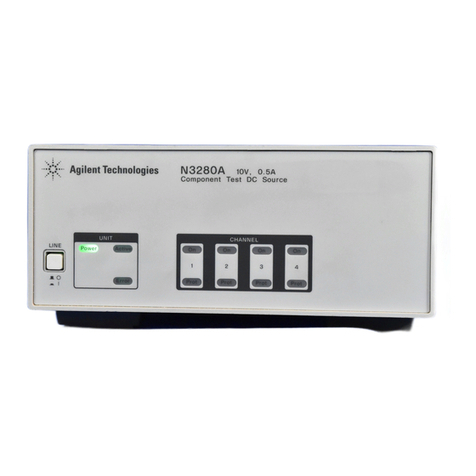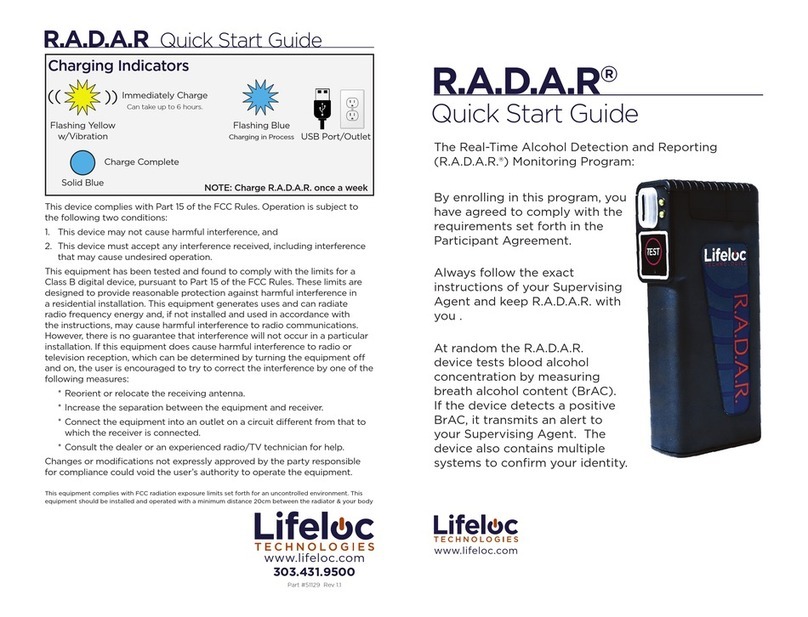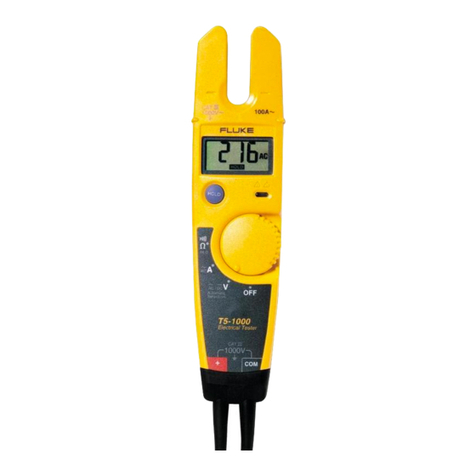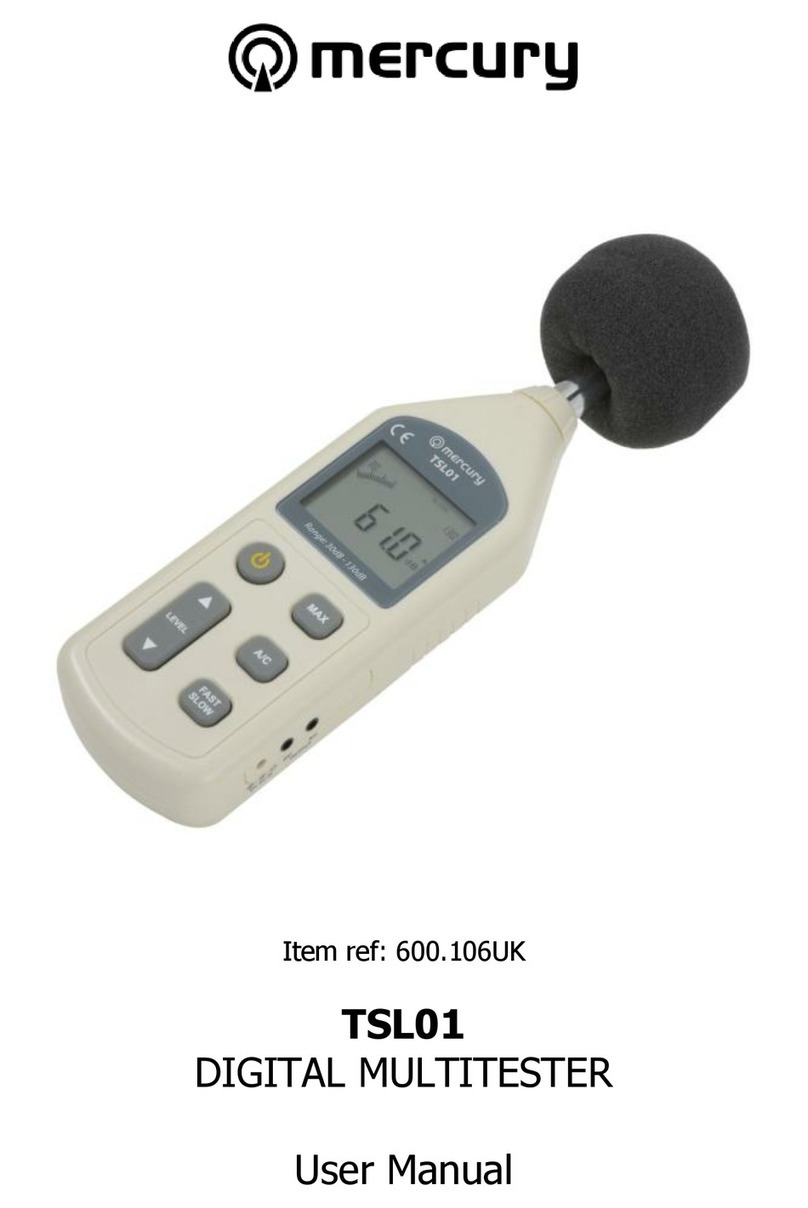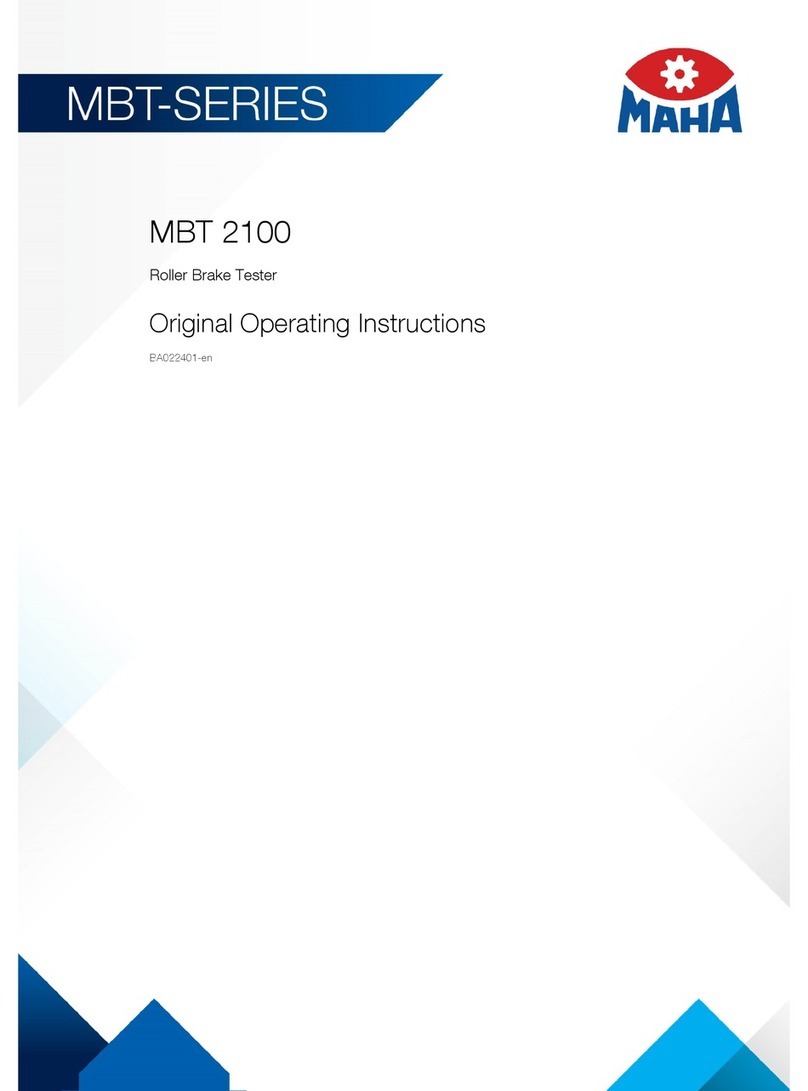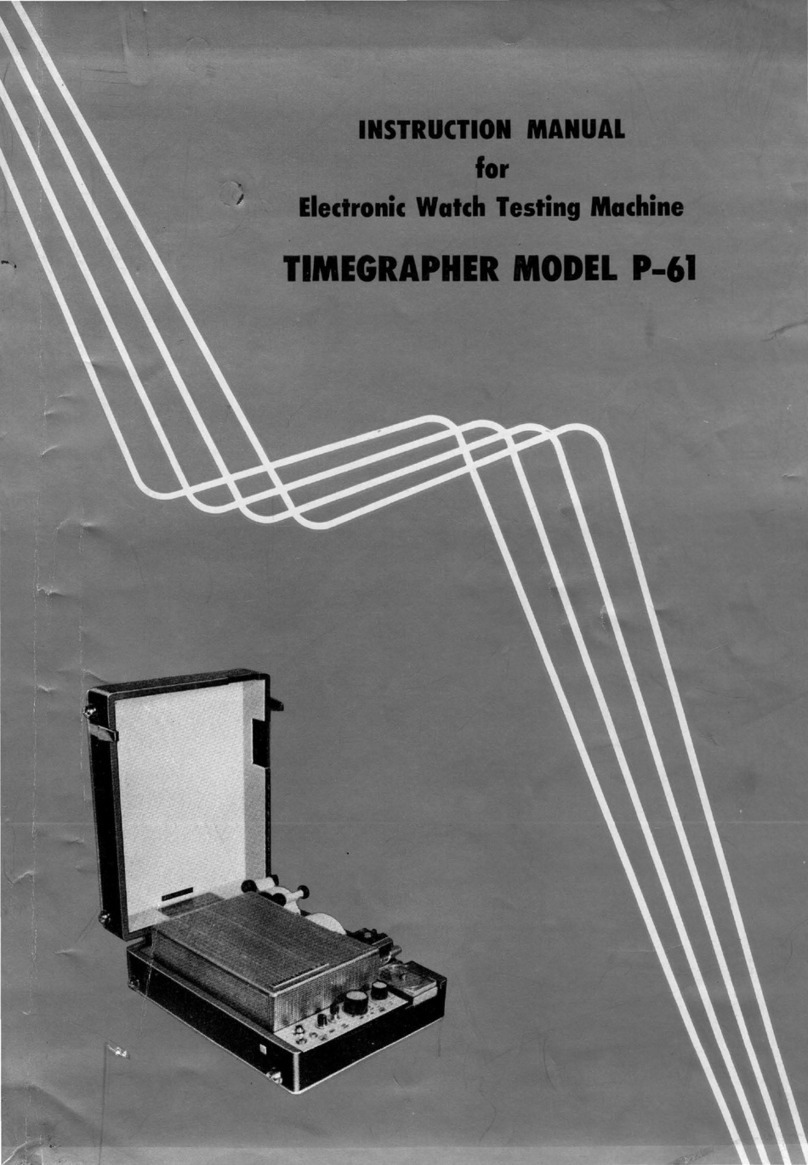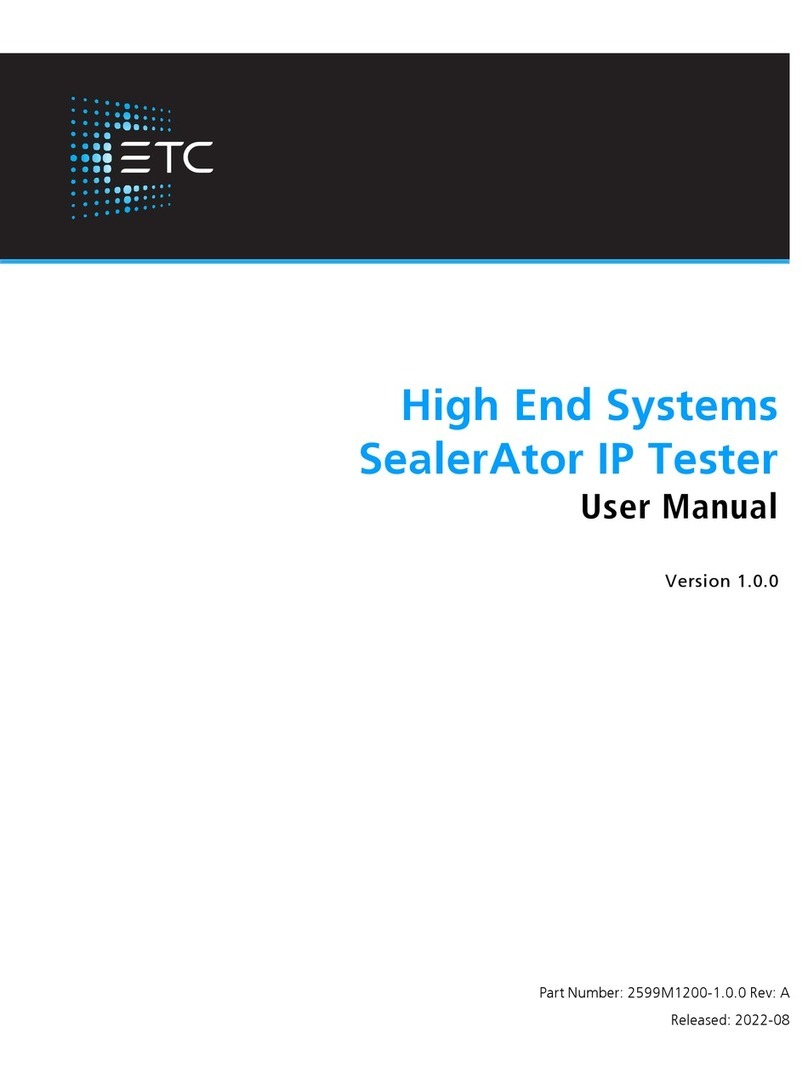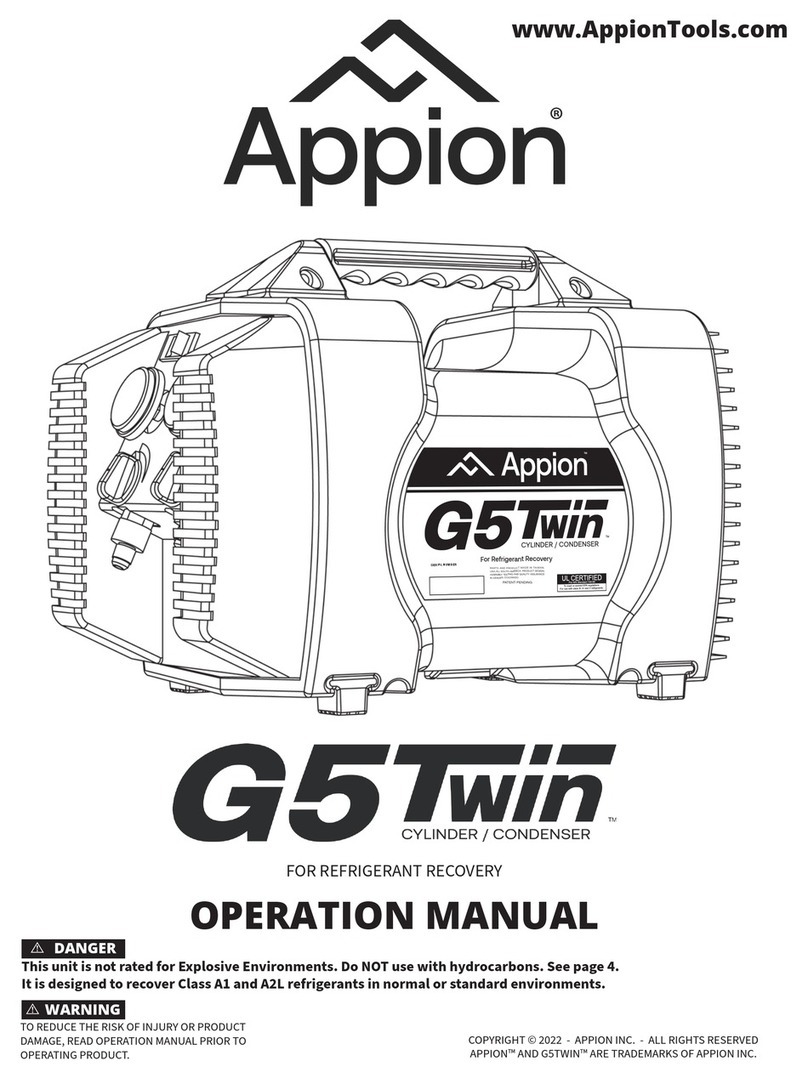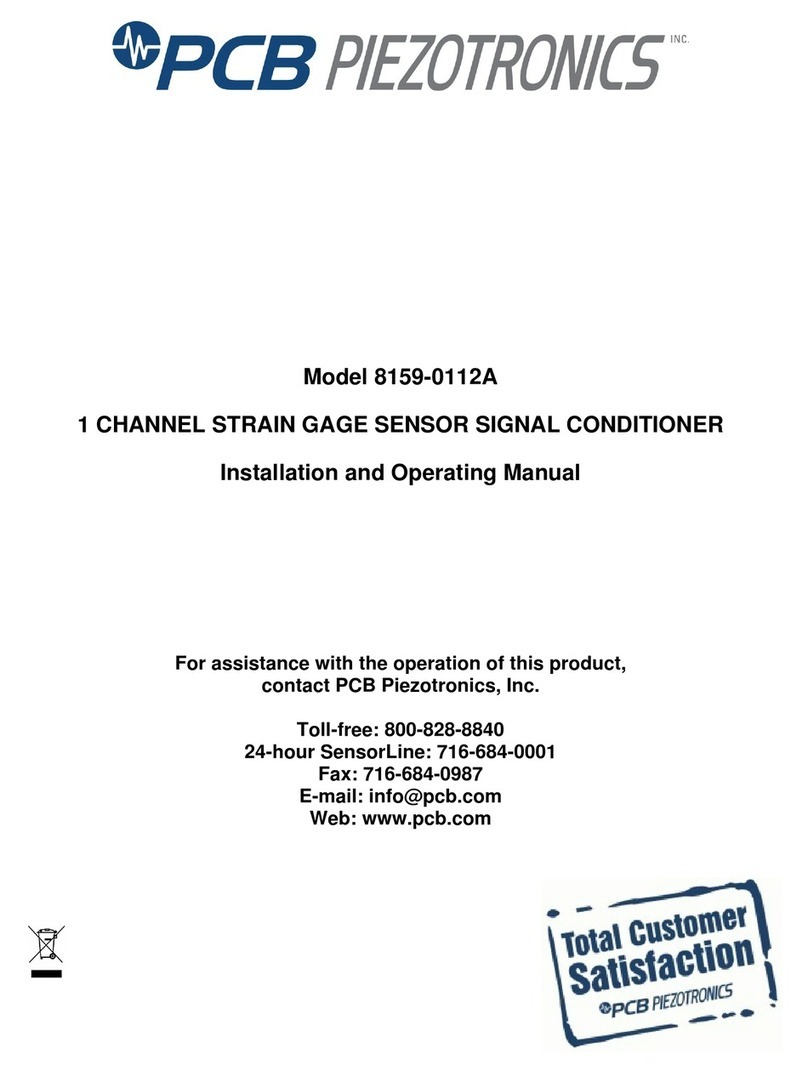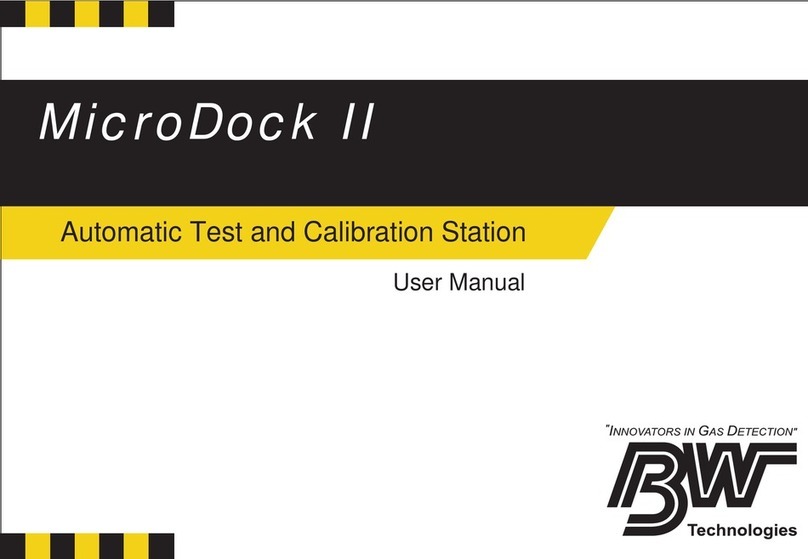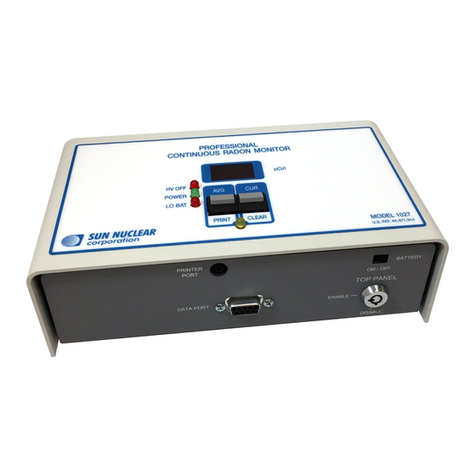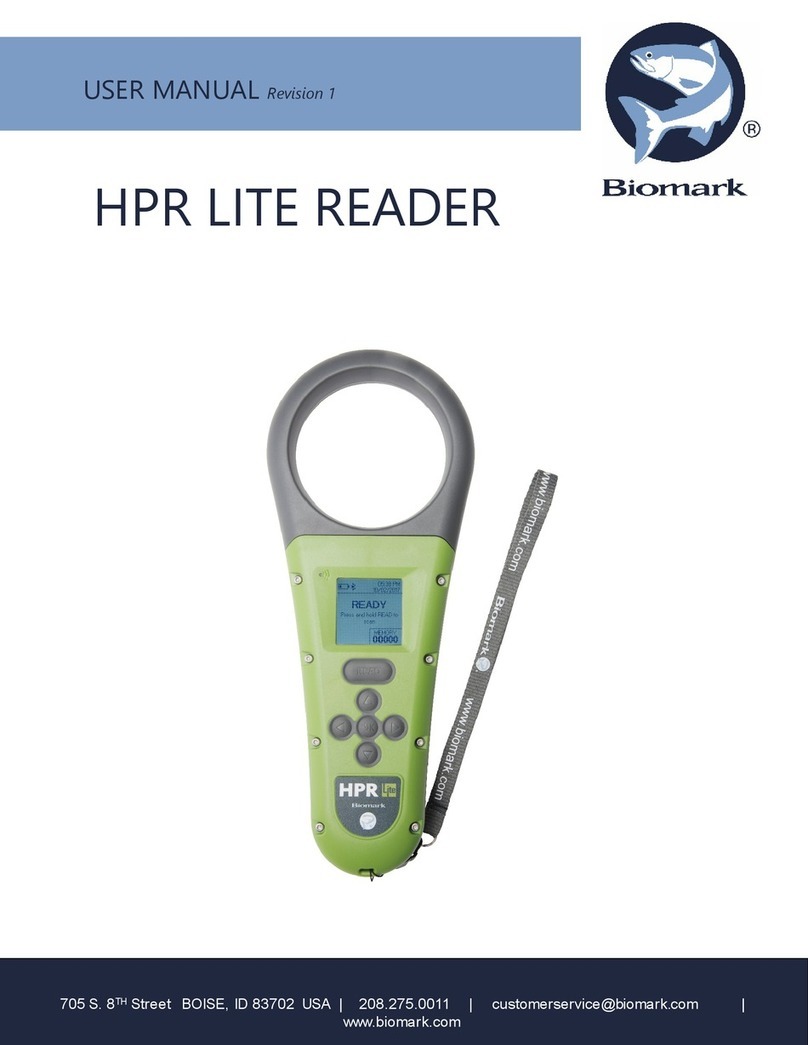
www.megger.com
3 Safety instructions
Lifting and carrying devices
The device may only be lifted and carried using the carry handles provided on the side. Other parts of the
device, such as the connection cables, are unable to withstand the forces that occur when the device is
lifted and could therefore break or tear off.
Behaviour in the event of faults during normal operation
The system must only be operated if it is in perfect technical condition. In the event of damage, irregularity,
or faults that cannot be rectified using the instructions in the operating manual, the system must be immedi-
ately shut down and marked accordingly. In this case, notify the relevant supervisor. Please contact the
Megger service immediately to rectify the fault. The system must not be put back into operation until the
fault has been rectified.
Five safety rules
These five safety rules must be consistently applied when working on the electrical connection between
the measuring system and the test specimen.
1. Disconnect from the power supply
2. Secure it against being switched back on
3. Test to ensure that it has been disconnected
4. Earth and short-circuit the system
5. Cover or cordon off adjacent live components
Fire fighting in the vicinity of electrical equipment
nCorrect extinguishing agent: Carbon dioxide (CO2).
nCarbon dioxide is electrically non-conductive and leaves no residue. It is safe to
use on live systems but the appropriate safety distances must be observed. A CO2
fire extinguisher should therefore always be available near the electrical system.
nImproper use of other extinguishing agents may damage the electrical system, for
which Megger cannot accept any liability Furthermore, if a powder extinguisher is
used near high-voltage equipment, there is a risk of voltage being transferred to the
person using the fire extinguisher (due to the powder mist).
nPlease always observe the hazard warnings on fire extinguishers.
nDIN VDE 0132 applies.
Persons with pacemakers/defibrillators
Persons with pacemakers/defibrillators may be at risk in the vicinity of the device as a
result of the physical processes in the high-voltage system.
8

